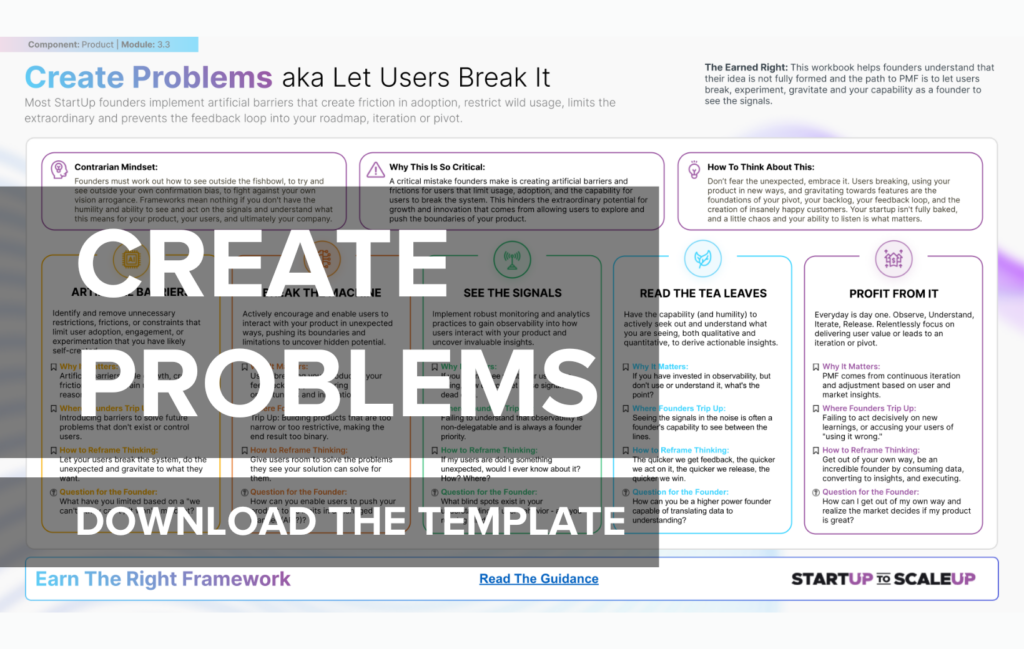How Can Startups Create Valuable User Challenges?
Why is creating user challenges important for startups?
Creating user challenges is crucial for startups because:
- Product improvement: It reveals how users actually interact with your product.
- Innovation opportunities: Unexpected uses can inspire new features or pivots.
- User engagement: Challenges increase product usage and user investment.
- Feedback generation: It provides real-world data on product strengths and weaknesses.
- Community building: Shared challenges can foster a sense of community among users.
- Market validation: It demonstrates real user need and product-market fit.
- Cost-effective R&D: Users essentially become part of your development team.
Embracing user challenges can accelerate product development and market fit.
How can startups encourage users to test product boundaries?
To encourage boundary testing:
- Create open-ended tasks: Give users goals without specifying how to achieve them.
- Implement rewards: Offer incentives for finding new use cases or pushing limits.
- Host competitions: Organize events that challenge users to use the product creatively.
- Provide sandboxes: Create safe spaces for users to experiment without consequences.
- Communicate openness: Explicitly invite users to try unconventional approaches.
- Showcase creative uses: Highlight innovative ways users have applied the product.
- Reduce restrictions: Minimize artificial limitations that might constrain user behavior.
The goal is to create an environment where users feel empowered to explore and experiment.
What strategies help startups gather valuable user feedback?
To gather valuable user feedback:
- Implement in-app feedback tools: Make it easy for users to share thoughts while using the product.
- Conduct user interviews: Have direct conversations with users about their experiences.
- Analyze usage data: Use analytics to understand how users interact with your product.
- Create user forums: Provide spaces for users to discuss the product and share ideas.
- Use surveys strategically: Ask targeted questions to gather specific insights.
- Offer beta testing opportunities: Let users try new features before general release.
- Monitor social media: Pay attention to unsolicited feedback on various platforms.
Focus on creating multiple channels for feedback and actively encouraging users to share their thoughts.
How can founders balance user freedom with product stability?
To balance freedom and stability:
- Implement feature flags: Use toggles to control access to experimental features.
- Create sandbox environments: Offer separate spaces for experimentation.
- Use gradual rollouts: Introduce new freedoms to small user groups before wider release.
- Set clear expectations: Communicate which areas are open for exploration and which aren’t.
- Monitor closely: Keep a close eye on how increased freedom affects overall stability.
- Have a rollback plan: Be prepared to quickly revert changes if issues arise.
- Separate core and experimental features: Ensure basic functionality remains stable.
The key is to create controlled environments for experimentation that don’t risk core product stability.
What role does user behavior analysis play in product development?
User behavior analysis is crucial for product development:
- Feature prioritization: It reveals which features are most used and valued.
- Usability improvements: It highlights areas where users struggle or get confused.
- Unexpected use cases: It can uncover novel applications of your product.
- Personalization opportunities: It provides data for tailoring experiences to user preferences.
- Churn prevention: It can help identify patterns that lead to user disengagement.
- Performance optimization: It shows where users experience slowdowns or errors.
- Roadmap guidance: It informs decisions about future product direction.
By closely analyzing user behavior, startups can make data-driven decisions about product development.
How can startups turn user challenges into product improvements?
To turn challenges into improvements:
- Establish feedback loops: Create systems to quickly act on user insights.
- Prioritize user-reported issues: Give weight to problems identified through challenges.
- Co-create solutions: Involve users in brainstorming and testing potential fixes.
- Run A/B tests: Use challenges to test different solutions to identified problems.
- Implement rapid prototyping: Quickly develop and test potential improvements.
- Communicate changes: Let users know how their input has shaped the product.
- Measure impact: Track how improvements from challenges affect overall user satisfaction.
The goal is to create a virtuous cycle where user challenges consistently lead to product enhancements.
Creating valuable user challenges is about striking a balance between encouraging exploration and maintaining product integrity. Start by fostering an environment where users feel empowered to push boundaries and try new things. Implement systems to capture and analyze the resulting behaviors and feedback. Use this data to inform your product development, prioritizing improvements that address real user needs and behaviors.
Your users can be your greatest source of innovation – by giving them the freedom to experiment, you’re essentially crowdsourcing your R&D. However, always balance this with the need for product stability and a consistent user experience. By successfully managing this dynamic, you can create a product that continuously evolves to meet user needs while building a committed, engaged user base.
